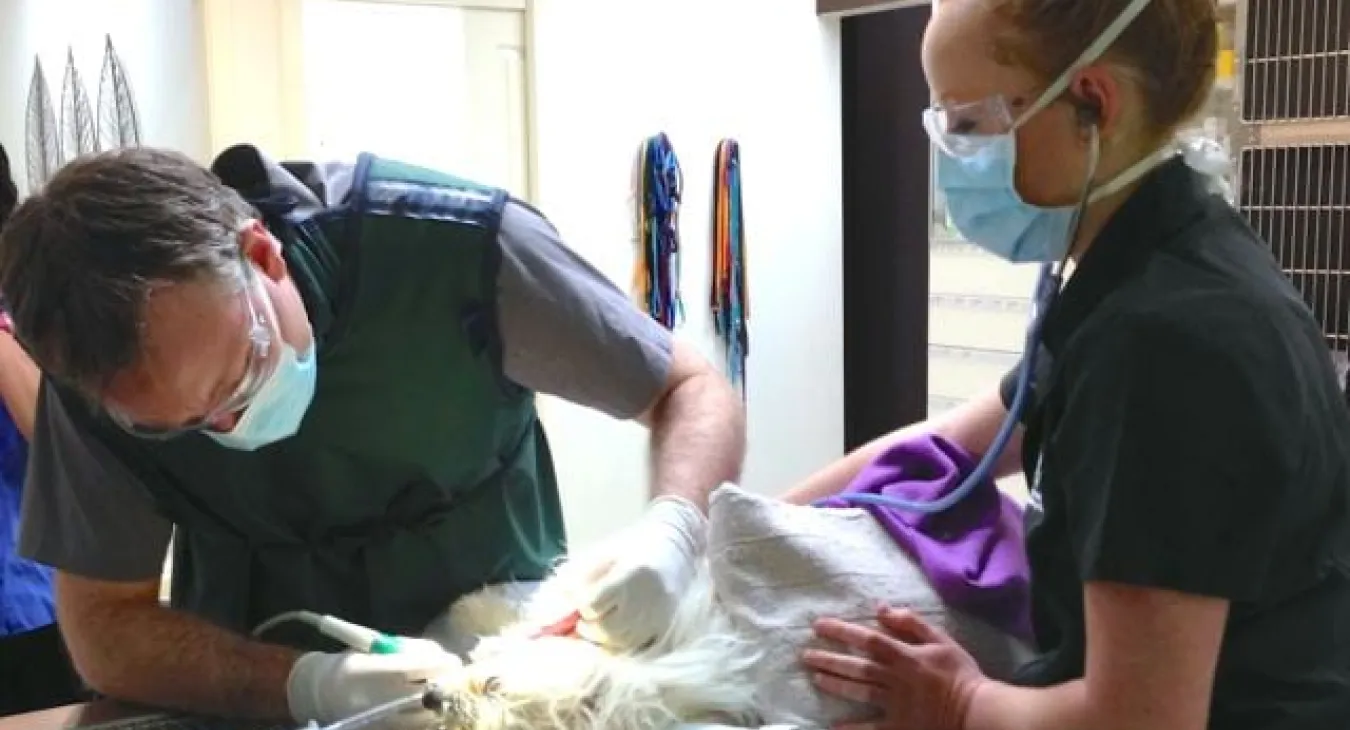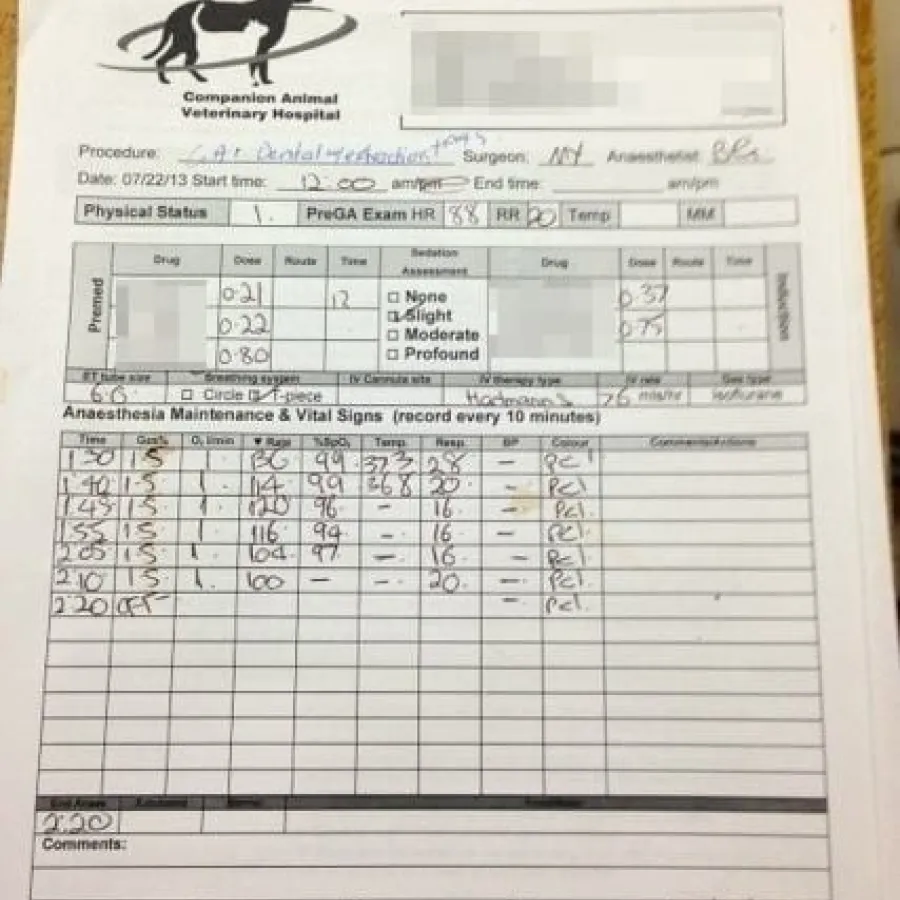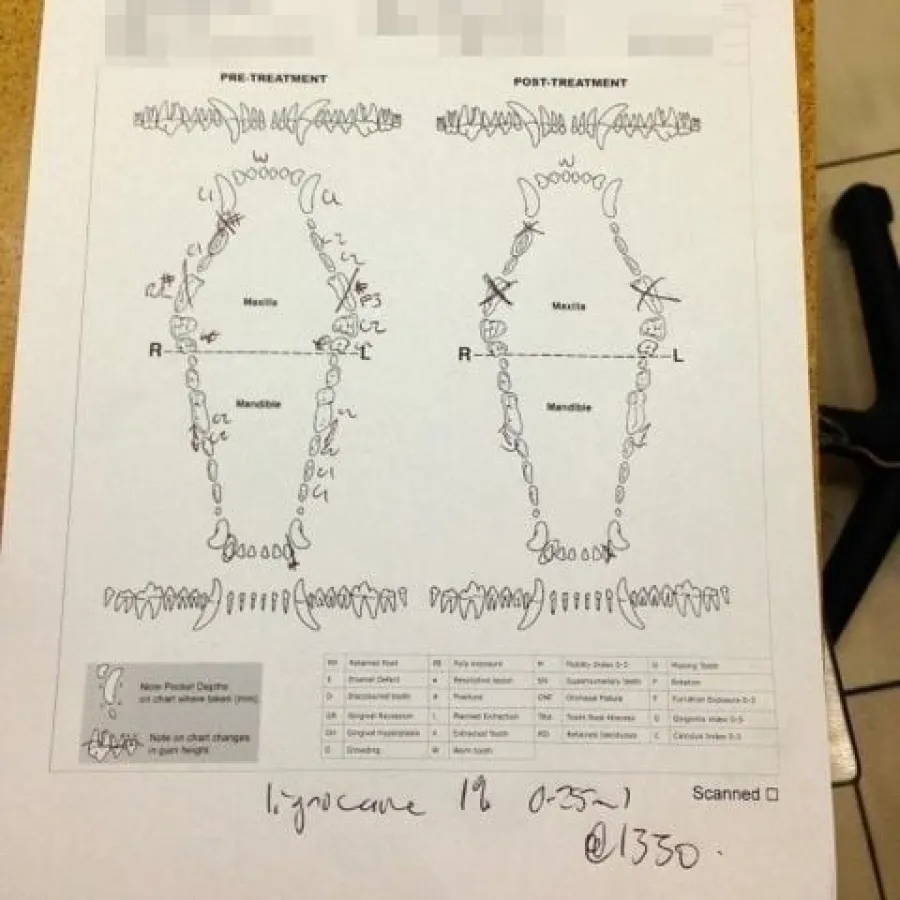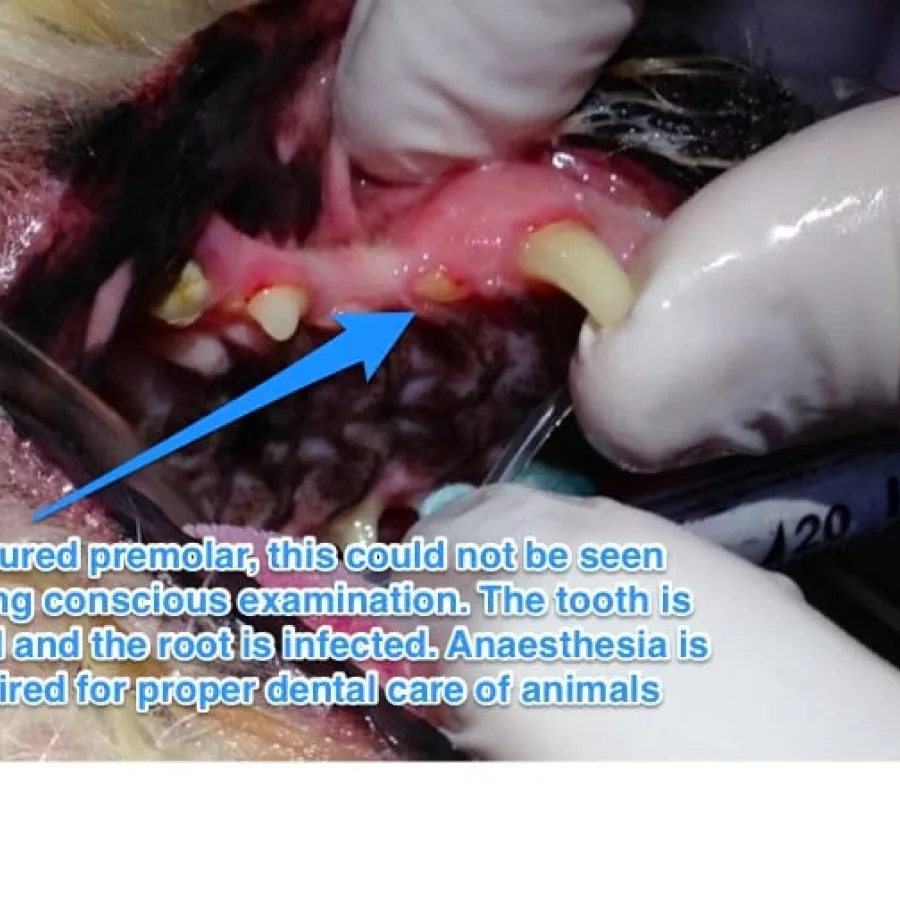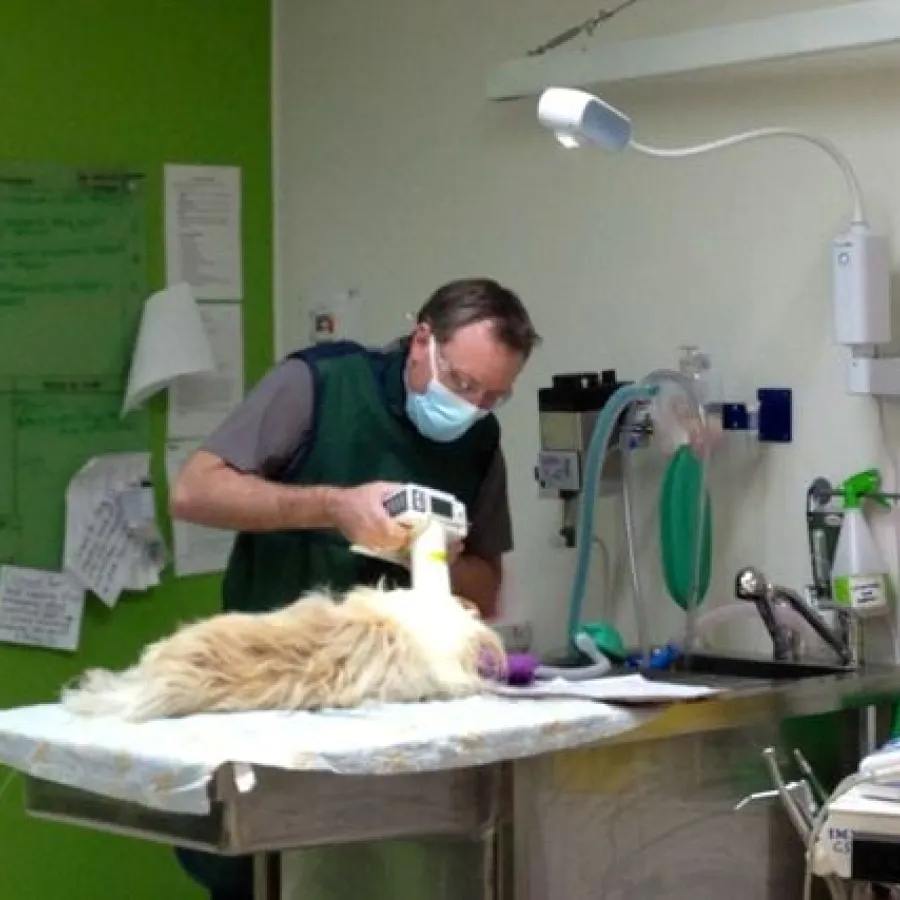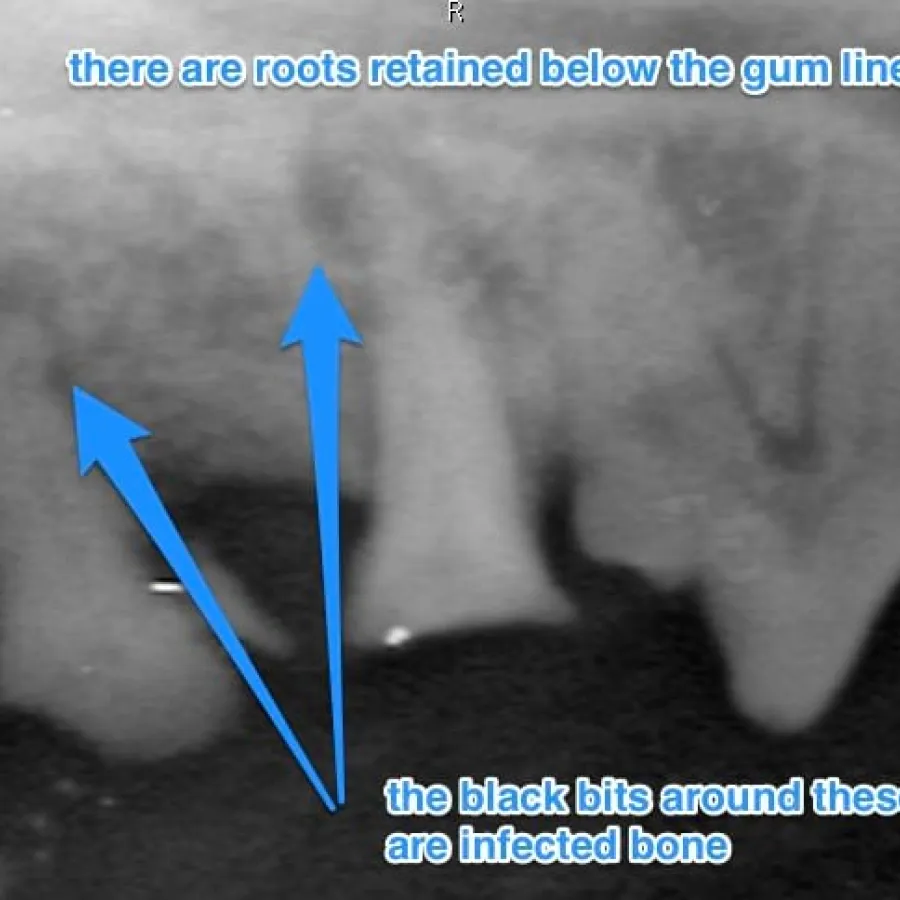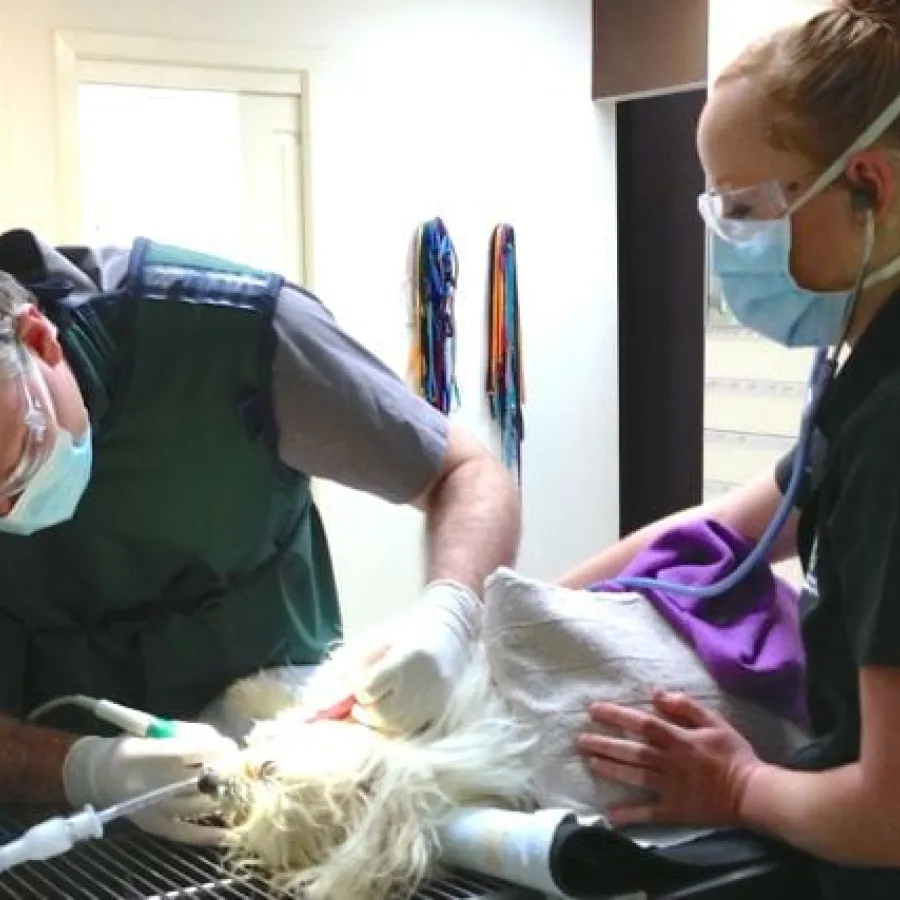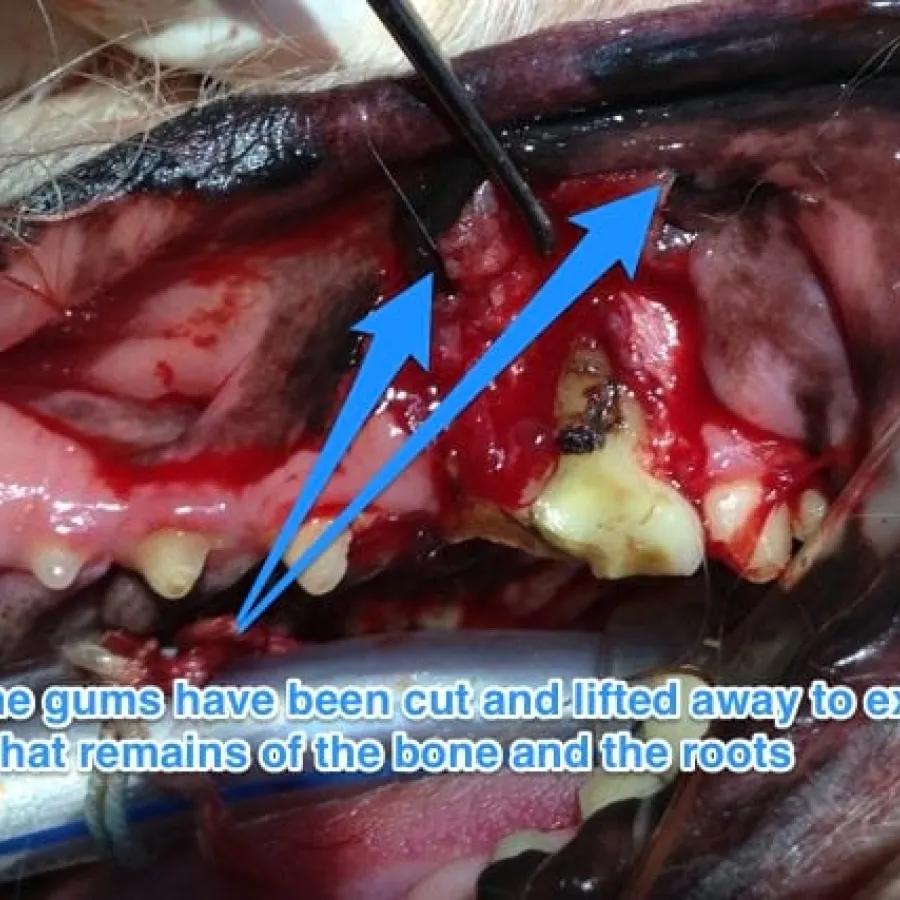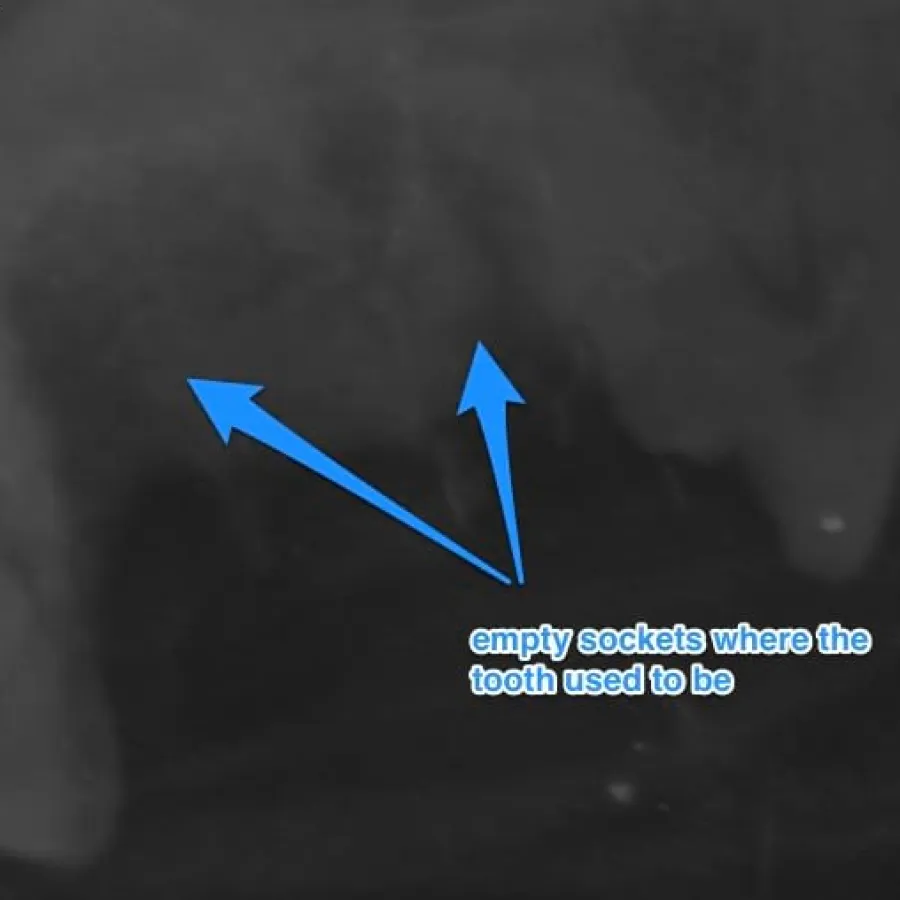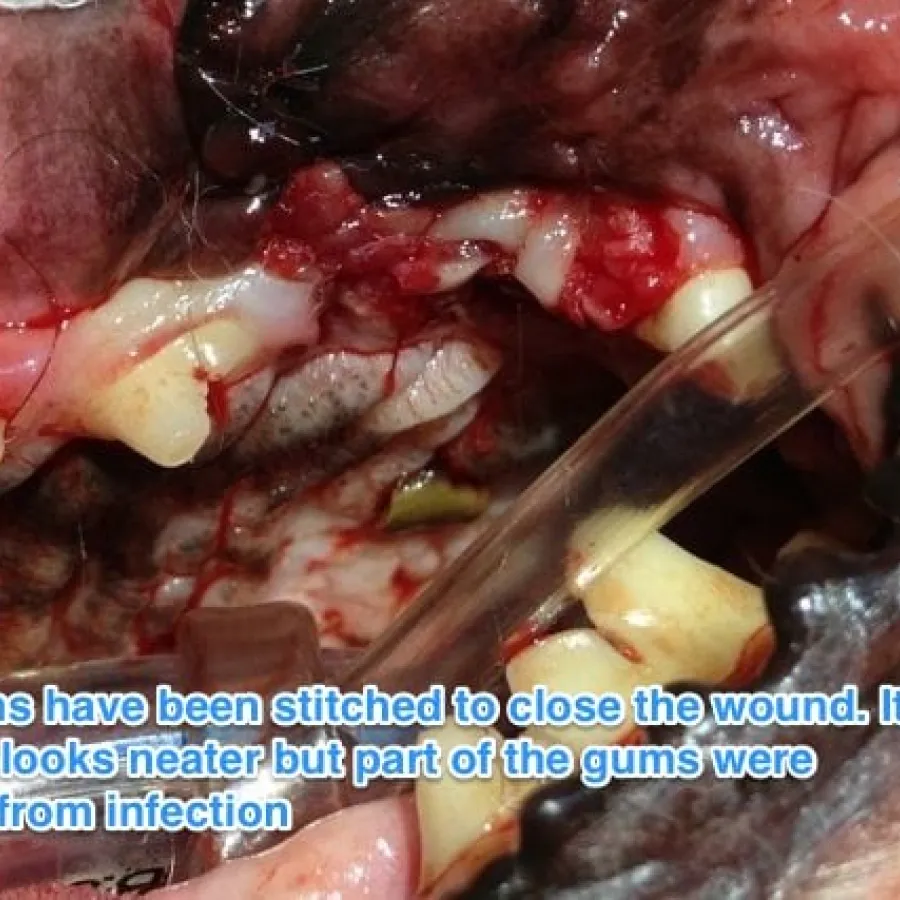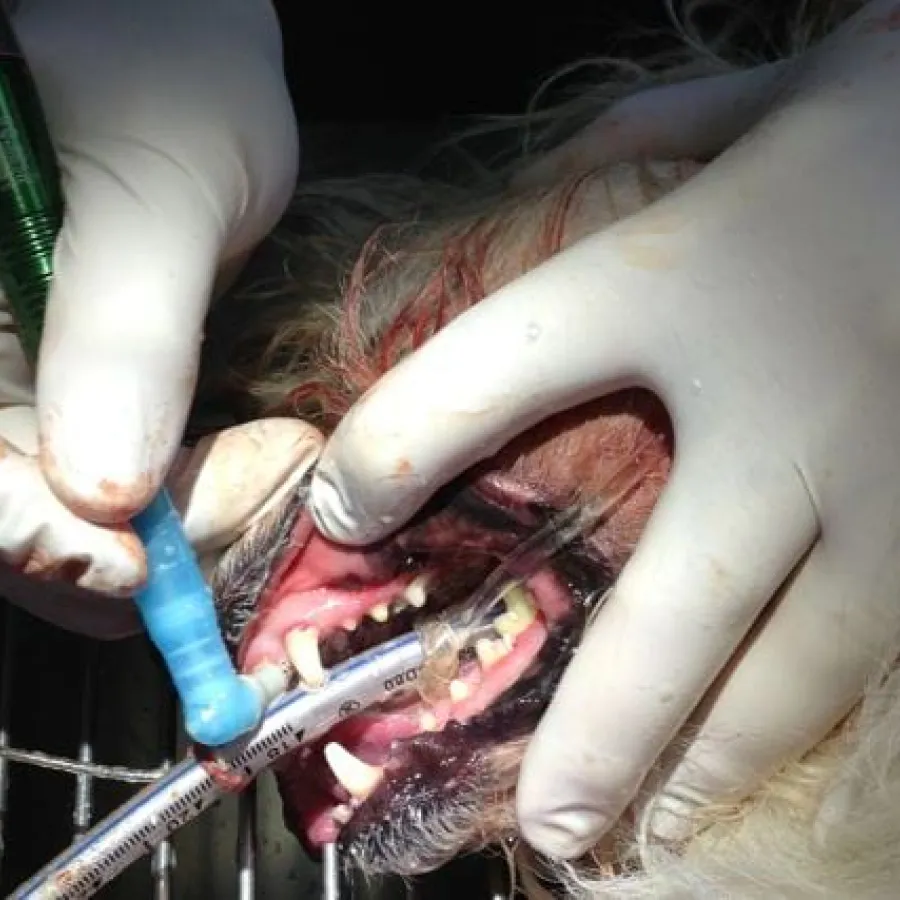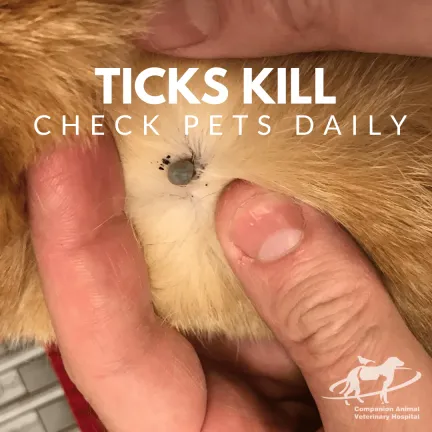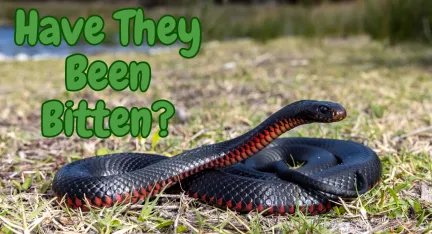Petal came to see us recently for an eye problem but during her examination we found that she had damaged some of her teeth, had periodontal disease and really bad breath! One of the broken teeth was infected and there was pus coming from around the tooth.
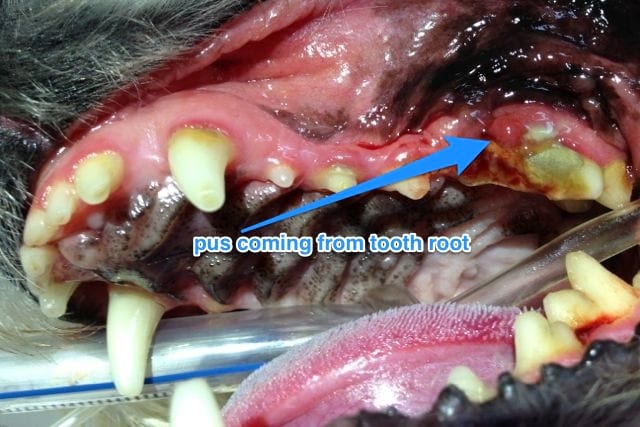
Not surprisingly her owner was not keen to see her in pain and we scheduled a dental. A dental is never routine as proper examination of the mouth requires a general anaesthetic. The following is what we found with Petal:
Preparation for the procedure
Because Petal needed a general anaesthetic she needed to have an empty stomach so all food and water was withheld from 10pm the night before. She was admitted somewhere between 8:30 and 9:00am in the morning. One of the nurses went through the consent form with her owner and and an approximate price range was agreed to. There are a series of questions we have to ask to help us to select a safe anaesthetic to use for the procedure. The risks of the procedure are explained and this is an opportunity to ask any questions.
Petal had a pre-anaesthetic exam during which we check out everything but especially the heart and lungs. She had a blood sample taken to check out her internal organ function. Taking all of this information we assign an anaesthetic status which gives us a measure of risk for the anaesthetic and this helps us to choose an anaesthetic protocol. On the preanaesthetic bloods we found that Petal had mildly elevated liver enzymes. This may have been due to the infection in her mouth or may have been because of a liver problem. We decided that the best course of action was to place her on a drip while under the anaesthetic and we plan to retest her liver enymes in a month to see if there's something there that we need to worry about.
Thanks to the fluids, Petal was a low risk anaesthetic and a premed was now given. This relaxed her and also got some pain relief on board. Giving pain relief before we do something painful is alot more effective than just treating the pain after it occurs.
It takes about 30 minutes for the premed to work. Once they are sedated we would normally place an intravenous cannula to provide IV access throughout the anaesthetic. As we already had Petal on a drip we already had IV access so that was not required in this case.
Petal was now anaesthetised ready for the dental. All patients undergoing anaesthesia at our practice have a full anaesthetic record kept and are monitored by a veterinary nurse until recovered
Examining the mouth
The first thing we do is to examine all the teeth an complete a dental chart. This identifies and problems that are present (eg. missing teeth), provides a record of the condition of the teeth and allows us to plan our procedure. Petals dental chart is below. There are some abnormalities there that we could not recognise in the consult room. There are a number of teeth missing and there is 1 tooth that we had not noticed that was broken and had an exposed pulp cavity which is generally quite painful.
Taking Dental Radiographs or xrays
We knew that there were fractured an infected teeth which some roots left but what exactly is going on under the gum line we can not see. This is why we take dental xrays. Dental radiography is relatively new to veterinary practice but after using it for around 12 months I could not live without it. We have identified so many issues which were resulting in pain for the animals that we would not have been able to identify previously. It also makes taking the teeth out so much smoother for the animal as we know what is in there.
On this xray we can see that where there is a tooth missing, the roots have actually been retained under the gums. There are no signs of infection around the roots and the roots appear to be being resorbed. At this stage we have elected to rexray the mouth in 6 months to recheck these teeth and we will extract them then if required.
Placing nerve blocks
Extraction of teeth is painful. To minimise the pain we place nerve blocks in the mouth by injecting local anaesthetic around the nerves that supply the teeth. This blocks any pain while the teeth are being extracted. While we wait for the nerve blocks to work we perform a scaling of the teeth.
Scaling
Scaling the teeth removes all the plaque, calculus and tartar from the teeth which is part of periodontal disease. If this is left on the teeth the periodontal disease progresses and eventually eat away the bone holding the teeth in and causes infection which means that the teeth need to be removed.
By now our nerve blocks have worked so we are ready to extract the teeth
Extracting any teeth
With the large teeth such as this cracked tooth a surgical extraction is required. A mucosal flap is elevated so we can access the base of the tooth. The tooth is then cut into sections using a high speed burr. Each root can now be removed individually.
An X-ray is taken to ensure that all of the roots are removed. Once we are sure all of tooth is removed the gums are stitched with a dissolving suture.
Polishing
The final step is to polish the teeth. a special paste is used and the polish is rubbed over the surface of the tooth using a special small rubber cup on the end of a slow speed hand piece. Polishing smooths the surface of the tooth to market harder for bacteria and plaque to attach to the tooth.
Aftercare
As you can imagine although we take several steps to minimize the pain there is still pain after the procedure. Any dog having extractions is discharged with pain relief to take at home. Sometimes, but not often, antibiotics are needed. In terms of diet, for a few days after surgery we recommend feeding chunks of chicken- they are soft and easy to chew and don't do any damage to the stitches.
Home care eg. brushing, diet, chews is discussed when the patient is discharged. In a week we recheck the mouth to check that everything is healed up fine.
Following any dental work a dental check is required every 6 months to check on the progress of the periodontal disease. Many times this requires a general anaesthetic to allow proper assessment and treatment.
Read more articles
- Log in to post comments

